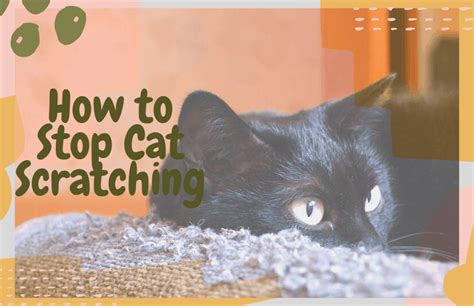No More Annoying Cat Scratches: A Simple Guide
Cat owners adore their feline companions, but those adorable claws can wreak havoc on furniture, walls, and even your skin! Scratching is a natural feline behavior, crucial for their physical and mental well-being. Instead of fighting it, understanding why cats scratch helps us find solutions that protect our belongings and keep our cats happy. This comprehensive guide will equip you with the knowledge and strategies to minimize those annoying cat scratches, once and for all.
Why Do Cats Scratch?
Understanding the reasons behind scratching is the first step to effective management. Cats scratch for several key reasons:
-
Physical Needs: Scratching helps cats shed the outer layers of their claws, keeping them sharp and healthy. Think of it as a natural manicure! The act also stretches and strengthens their muscles.
-
Marking Territory: Cats have scent glands in their paws. Scratching deposits these scents, marking their territory and leaving a visual and olfactory message for other cats.
-
Stress Relief: Scratching can be a stress-relieving behavior. Cats may scratch more when feeling anxious, bored, or overwhelmed.
-
Play and Exercise: Scratching can be a fun and stimulating activity for cats, providing much-needed exercise and mental stimulation.
How to Stop Cat Scratching: A Multi-pronged Approach
There's no single magic bullet, but a combination of strategies usually works best. Here's a comprehensive approach:
1. Provide Appropriate Scratching Posts
This is the cornerstone of preventing unwanted scratching. Offer a variety of scratching posts and surfaces to cater to your cat's preferences:
- Different Materials: Cats have different preferences – sisal, carpet, cardboard, and even wood can be appealing. Experiment to find what your cat loves.
- Variety of Styles: Vertical posts, horizontal boards, and even corner scratchers offer different scratching angles and positions.
- Strategic Placement: Place scratching posts near areas where your cat currently scratches. This makes the transition easier.
- Regular Maintenance: Replace worn-out scratching posts to maintain their appeal.
2. Deter Unwanted Scratching Behaviors
Once you've provided suitable alternatives, you need to discourage scratching in inappropriate areas:
- Make it Unattractive: Cats dislike sticky surfaces, so applying sticky tape or plastic sheeting to furniture can deter them. Citrus scents are also generally disliked by cats.
- Positive Reinforcement: Reward your cat whenever they use their scratching posts. Treats, praise, or interactive play can reinforce positive behavior.
- Cover Furniture: Use cat-resistant furniture covers or protectors to safeguard your belongings.
3. Addressing Underlying Issues
Sometimes, excessive scratching indicates an underlying problem:
- Stress and Anxiety: Identify and address potential stressors in your cat's environment. Changes in routine, new pets, or loud noises can trigger increased scratching. Enrichment activities, like puzzle feeders or interactive play, can help alleviate stress.
- Medical Conditions: If scratching suddenly increases or your cat shows other signs of discomfort, consult a veterinarian. Underlying medical conditions can sometimes contribute to behavioral changes.
4. Trimming Claws
While trimming claws doesn't address the root cause, it can lessen the damage caused by scratching. Consult a veterinarian or groomer if you are unsure how to properly trim your cat's claws.
Frequently Asked Questions (FAQs)
What if my cat still scratches after trying all these methods?
If you've implemented all the above strategies and your cat continues to scratch inappropriately, consider consulting a veterinary behaviorist. They can offer specialized guidance and help identify any underlying medical or behavioral issues.
Are there any humane ways to stop scratching behavior?
Yes! Avoid punishment, as it can create fear and anxiety, making the problem worse. Focus on positive reinforcement, providing appropriate scratching alternatives, and addressing any underlying stress or medical issues.
How can I train my kitten to use a scratching post?
Start early! Introduce your kitten to a scratching post as soon as you bring them home. Place it near their sleeping or playing areas, and guide their paws onto the post when they start scratching inappropriately. Reward them generously for using the post.
My cat only scratches my sofa. What can I do?
Try placing a scratching post near the sofa, and cover the sofa with a cat-resistant material. You might also need to experiment with different scratching post materials to find one your cat prefers. Consider using a deterrent like citrus spray on the sofa to make it less attractive.
By understanding your cat's scratching behavior and implementing these strategies, you can significantly reduce unwanted scratching, protect your belongings, and maintain a harmonious relationship with your feline friend. Remember, patience and consistency are key!

